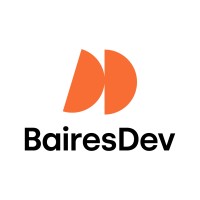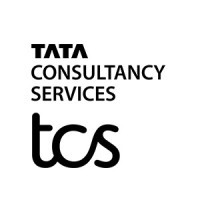Top 8 Salesforce Managed Services Providers
Managed Services has the potential to deliver quality guidance and the flexibility needed to make it a sustainable, scalable soluion for managing Salesforce - we explore the top Partner options Onshore, Nearshore, and Offshore vendors.
Salesforce Managed Services Overview
For companies who prefer not to establish an in-house Salesforce team, Salesforce Managed Services is a great option to make sure your stance is optimized, maintained and supported. The tricky part about engaging with Salesforce Managed Services Providers though, is ensuring that the Partner you chose is a fit your business.
Below, you'll find a set of questions you need to ask yourself that'll help you determine the type of Salesforce Managed Provider you might need, but before we get into that, let's look at some crucial must-haves any good Salesforce Partner can offer:
Expertise and Specialization
Good Managed Services Providers (MSPs) must specialize in Salesforce and possess deep expertise in the technology. Generalists and IT Consultants will never be able to provide the level of expertise that a Specialized Partner (like FoundHQ) can provide.
Cost-Effective Scalability
You want to make sure your Salesforce Managed Services Provider scales their support and development resources based on your true needs. They need to be totally and completely aligned with your goals, and incentivized to do what's best for YOU, instead of what's easier or more profitable for them.
Strategic Guidance
Beyond technical support, good Salesforce Managed Services Providers often provide strategic guidance, helping organizations align their Salesforce usage with overall business objectives. This ensures that Salesforce becomes a strategic asset, contributing to the achievement of organizational goals.
Criteria for Selecting a Managed Services Partner
A few questions you will want to use yourself to get started:
Do I need the Salesforce team to be self-directed or will members of my existing organization be overseeing the work?
Is the primary need for day-to-day support and administration or is there a need for Salesforce development?
How much overlap in time zone do we need for meetings with our team?
Will we have daily stand ups with the Managed Services team?
What tools will we use to manage the team’s work, assign tasks, and monitor performance?
The questions outlined above should provide a guide for how you want to think about the different categories of managed services providers. Just like Salesforce Partners offer a range of services and capabilities, so do managed services providers. Be sure to identify your specific criteria and hone in on the right capabilities.
Now that you've outlined the type of partner you are targeting, focus on the logistics of the engagement and find a vendor that works within the processes that align best with your current workflows.
Support Or Development?
Typically, a Managed Services Partner will focus on either Support or Salesforce Development, so you want to begin your vendor selection process by defining the specific work you need to get done
A Support Partner will mostly supply you with Salesforce Administrators to work with users and stakeholders, document business processes, and handle all user on-boarding and setup, permission set changes, and configuration with flows.
If you have capabilities on the internal team and you need additional horsepower on the development side, you should go with a Development Partner. This can range from engaging a single Salesforce Developer to embed within your team all the way up to hiring a 10-15 person Salesforce Development team that will work a full 40 hours per week with you and act as your de facto Development org.
Nearshore, Offshore or Onshore?
When selecting a Managed Services Provider, one of the first considerations is geographic preferences. You can choose Onshore, Nearshore, or Offshore vendors for Salesforce Managed Services, each with a distinct set of advantages and disadvantages based on the service level needed within your org.
The main reasons for looking at Managed Services Providers from a geographical standpoint are:
1. Cost
Since companies are typically leveraging Managed Services Providers on a full-time basis (40 hours per week), costs can scale pretty quickly.
If you are looking at Managed Services as a cost-cutting measure compared to hiring a full-time staff in the United States, then you will need to look at Offshore vendors. These are most often based in India.
If cost isn’t the primary factor and you need strategic guidance, frequent communication with your team, and a real advisor in your Salesforce decision making then it’s a better option to look at Nearshore vendors (most often Argentina or Brazil) of an Onshore Partner (in North America).
Nearshore teams will often be 40%-50% of the cost of an Onshore Partner.
2. Time-zones
Similar to the above, the biggest factoring in determining location of your Managed Services Partner is the frequency of communication with the team. If you anticipate needing daily stand-ups or a heavy meeting schedule between your team and the Partner, it’s best to find a vendor within 3 hours of your time zone.
Be sure to discuss the typical work hours for the Managed Services team and do not assume they will be working on your local schedule.
3. Independence of Team
A Managed Service team that is going to focus mostly on production (i.e. execution of assigned tasks) with less frequent meetings, can be based anywhere.
In fact, the less communication required, the more advantageous it is to find a team that is on the opposite time zone of you. This would allow your team to get work done between 9am-5pm Local Time, including creating technical requirements and assigning tasks, and the work would actually be completed between 9pm-5am Local Time - the ultimate asynchronous work environment allows for this type of collaboration, so that work is effectively getting done 24 hours per day.
FoundHQ vs Consulting Partners
Companies are told that Salesforce Partners are the only place to go for quality guidance or reliable execution. But that’s simply not true. At least anymore.
There is absolutely a time and place to leverage Consulting Partners but that is primarily limited to projects that will require a Delivery team of 10+ Consultants engaged simultaneously. More often than not, stakeholders turn to Firms when a better option is hiring a small team of Independent Consultants.
FoundHQ was born out of a very real need: a way to engage the same Salesforce Consultants you get from a Partner at a fraction of the cost.
How Consulting Partners Work
There are a few key aspects to the way Salesforce Partners work with you to get the work done. This is a simple reality of their business model.
Deliver the Work and Leave
Their business runs on delivering projects efficiently so they can manage their workload and move on to the next project. Obviously, you're looking to get the work delivered quickly as well but you want to make sure it's done right before they leave - and if the Partner has another project lined up for their Consultants, the final stages can get rushed.
Not to mention, most Partners simply don't have a cost-effective model to support you after go-live. They will either charge astronomical rates for access to an individual Consultant or they will hand everything over and wish you luck.
All Deliverables are Scoped Upfront
In order to achieve the fastest possible deployment, the start of an engagement with a Partner involves scoping the entire project from start to finish and solidifying a timeline for when everything is scheduled to be completed.
Again, project planning is critical for success but it leaves very little room to maneuver. As you learn new things along the way, you might want to change some of the original plans and Partners make it very difficult to do so.
Partners Execute 100% of the Work
Perhaps you have a capable Salesforce Administrator or Developer in-house that would love to get their hands on this new project. It would give them experience and bring the cost of the project down but Consulting Partners don't want to do things that way.
They want to staff an entire team on the project and get as many Consultants billable as possible in order to maintain control. It means means that regardless of what expertise you have within your company - or who on your team you'd like to get some Salesforce exposure - the Partner will be push as many of their Consultants as possible, increasing the overall cost of the project and making knowledge transfer harder during go-live.
Partners are Very Expensive
The typical bill rate per Consultant from a Partner is $200/hour to $350/hour.
They will justify it by saying quality comes at a cost but it's really because Consulting Partners have a lot of overhead, which needs to accounted for in their price. In contrast, Independent Salesforce Consultants charge a significantly lower hourly rate - typically in the range of $100/hour to $175/hour.
And don't be fooled, their experience is identical to the Consultants you get from a Consulting Partner since many Independent Salesforce Consultants used to work for a Partner!
When To Hire Who: FoundHQ vs Consulting Partners
The Partner approach is ideal for larger transformation projects where the team being engaged across strategy, business process optimization, and systems work exceeds 10+ Consultants engaged simultaneously.
At this scale, it's beneficial to have a single vendor accountable for managing the all workstreams and keeping things organized.
But you should strongly consider engaging Independent Consultants for any initiative that requires fewer than 10 Consultants - and especially those that only need a team of 2-3.
In these scenarios, you can take a surgical approach to hiring only the experience needed, while also partnering with someone that remains available to you long after the project is delivered.
Why FoundHQ
Our approach gives you the best of both worlds.
The expertise of a Consulting Firm. The collaboration of an FTE.
And cost savings only a Freelancer can offer.
FoundHQ brings 10+ years of experience building Salesforce teams, including work with some of the top Partners globally. By partnering with us, you get access to a network of 8,000+ pre-vetted Salesforce Consultants, including talent from Slalom, Accenture, Deloitte, IBM, Kicksaw, Coastal Cloud, Salesforce, and hundreds of other Consulting Firms.
We possess the single largest Salesforce knowledge base and the ability to help you identify the right team needed to deliver any scope of work.

Get Matched to the Right Salesforce Consultant
FoundHQ is the easiest way to get work done in Salesforce.
As we highlighted in our Guide to Selecting a Partner, finding a Consulting Firm with expertise in the specific Product you need is only one piece of the equation.
Don't overlook the importance of vetting Partners on the specific type of work they deliver and how they will engage with you throughout the engagement.
If you're looking for guidance or an outside opinion on vendor selection, book a call with our team any time.

FoundHQ
New York, NY
Consultants:
8,000+
FoundHQ - The Largest Network of Salesforce Support Experts
Quick Stats
500+ completed Salesforce projects
8,000+ pre-vetted Salesforce Freelance Consultants
No minimum project size
No rigid SOWs
No matching fees
Founded in 2020
Serves United States, Canada, United Kingdom, France, Germany, and Australia with Salesforce Consultants in 30+ Countries
FoundHQ provides access to the single largest network of Salesforce support experts in the world. This unique positioning allows FoundHQ to serve startups, mid-market, and enterprise organizations with a wide range of Salesforce services. Our model supports customers looking to identify project-based Salesforce contractors that function as embedded members of their team.
Getting started with FoundHQ is easy:
You tell FoundHQ about your project needs.
Within 24 hours, we match you with 2-3 Salesforce support consultants specifically identified for your project.
You choose the consultant(s) to interview.
Kick off the project — and FoundHQ will support you every step of the way.
To learn more about if FoundHQ is the right fit for your project, you can Create an Account, List a Quick Project, or Book an Intro Call.

Penrod
Milwaukee, WI
Consultants:
62
Certified Salesforce Partner that provides both Implementation Services and Managed Services. Companies needing help with Health Cloud specifically would benefit from Penrod’s competency in this area.
Penrod is a Salesforce partner that specializes in healthcare and life sciences. They have a deep understanding of the Salesforce platform and how it can be used to solve the unique challenges of these industries.

Zennify
Sacramento, California
Consultants:
109
Another Industry-specific Salesforce Partner offering Implementation and Managed Services. Zennify's focus on the Financial Services sector again provides unique industry expertise, which is often a good way to select Managed Services Partners. Since these teams are embedded in your organization, existing domain experience will significantly reduce ramp time to getting them productive.

BairesDev
San Francisco, California
Consultants:
A 3,000+ person Global IT Consultancy with primary operations in Brazil , BairesDev has a mid-sized Salesforce Managed Services Practice. While they aren’t the largest Nearshore Partner, the quality of their team is significantly higher than other vendors based on customer research FoundHQ has conducted across the market.

Oktana
Montevideo, Uruguay
Consultants:
319
Oktana is a nearshore Salesforce support partner that helps companies innovate through seamless multi-cloud Salesforce implementations. They of course also offer Salesforce support to customers.
Founded in 2014, Oktana has partnered with over 250 companies of all sizes and industries, from Silicon Valley to Helsinki. With a team of over 650 Salesforce certified experts distributed across Bolivia, Colombia, Ecuador, Paraguay, Peru, Uruguay, and West Virginia, Oktana is well-positioned to help companies of any size or location achieve their Salesforce goals.
Areas of Expertise
Salesforce Project Delivery
Salesforce Managed Support Services
Staff Augmentation

Persistent Systems
Pune, Maharashtra
Consultants:
2,571
Global Consultancy with a 500+ person Salesforce Practice, most of which is based in India. While Persistent has long been purely Managed Services, they have expanded into more Salesforce Solutions Consulting over the last several years, which offers a blend of experience depending on project needs.

TATA Consulting
Mumbai, Maharashtra
Consultants:
8,616
500,000+ Technology Consultants across 46 companies, TCS is one of the largest global Professional Services organizations in any category. Similarly, they have a US-based Salesforce Practice that rivals Accenture, Deloitte, and IBM in Solutions Consulting but a huge bench of offshore Salesforce Developers available for staff augmentation.

Customertimes
Ukraine
Consultants:
25
Lesser known 200-person Salesforce Partner with primary operations in Ukraine. Customertimes maintains a bench of 25+ Salesforce Consultants onshore, so this is a good option for companies needing a hybrid onshore-offshore team, helping to bridge the gap in communicating with offshore Developers while still looking for a cost-effective option.


Get Matched to the Right Salesforce Consultant
FoundHQ is the easiest way to get work done in Salesforce.

